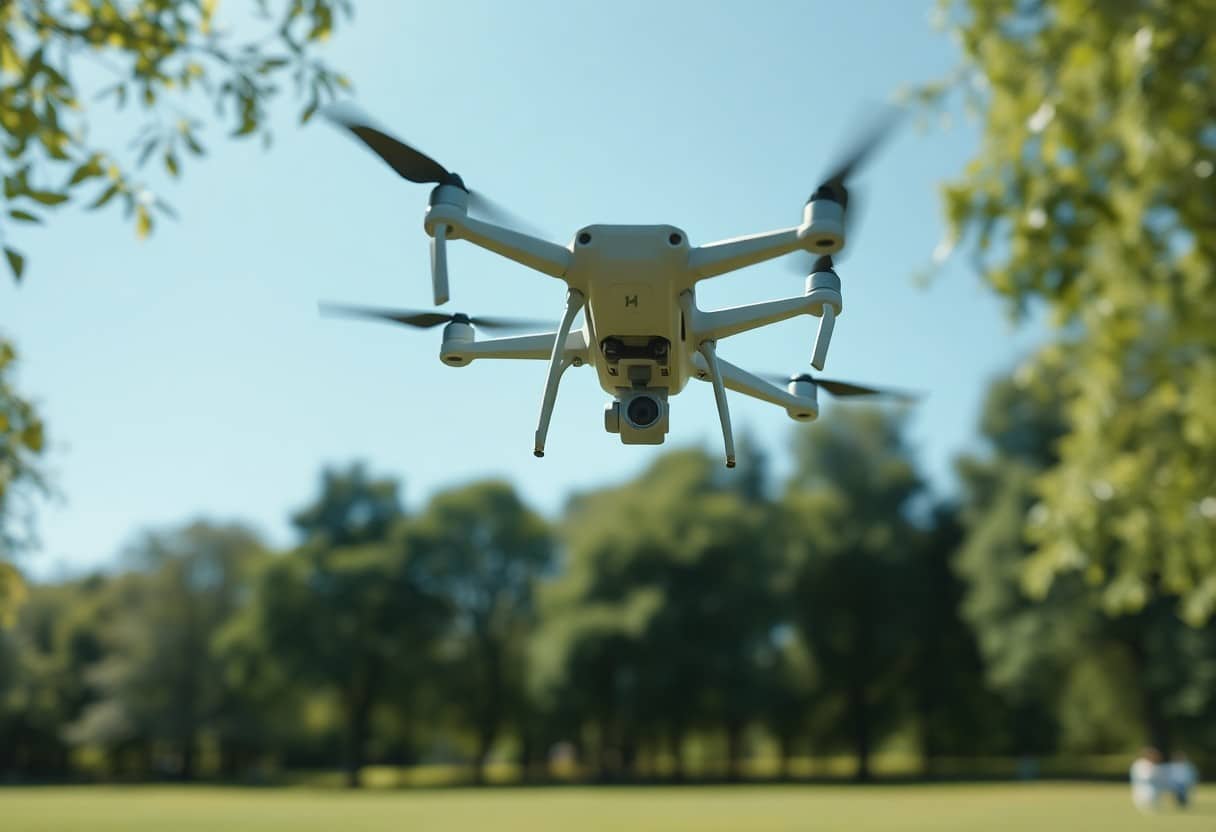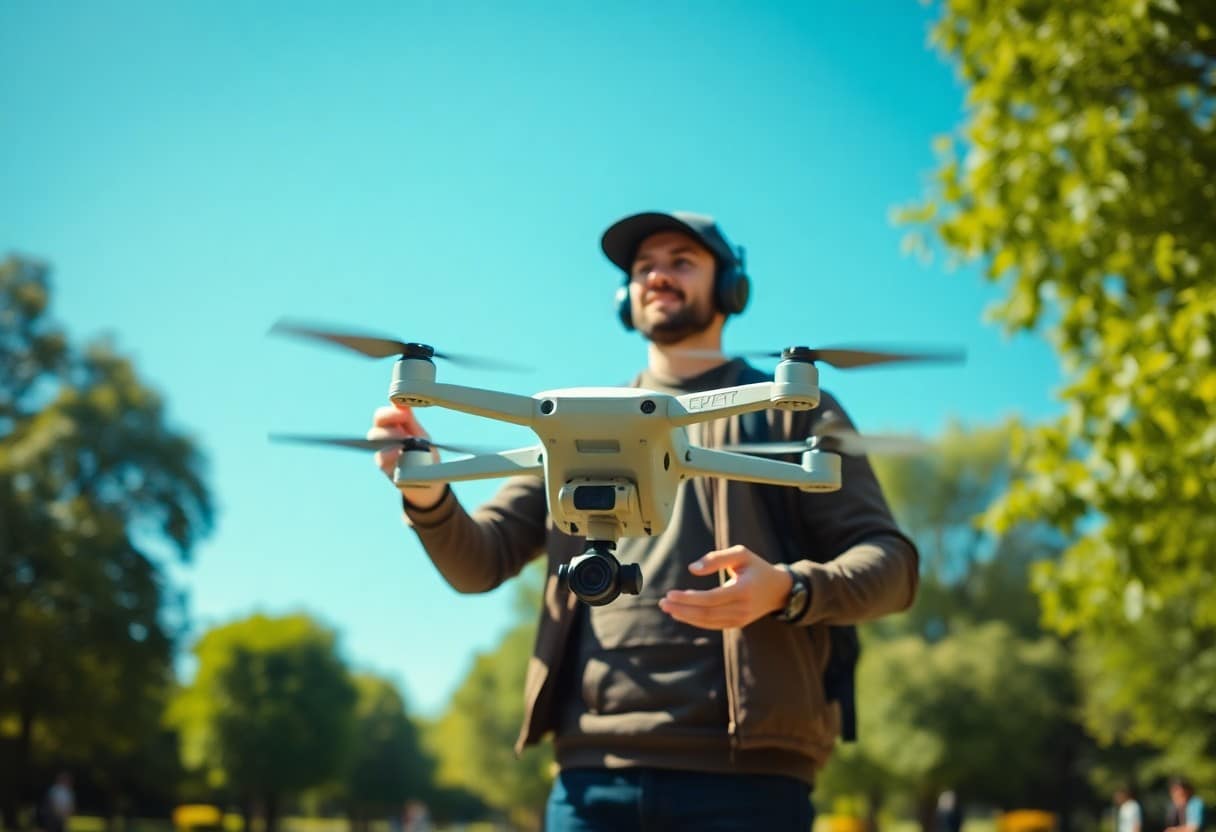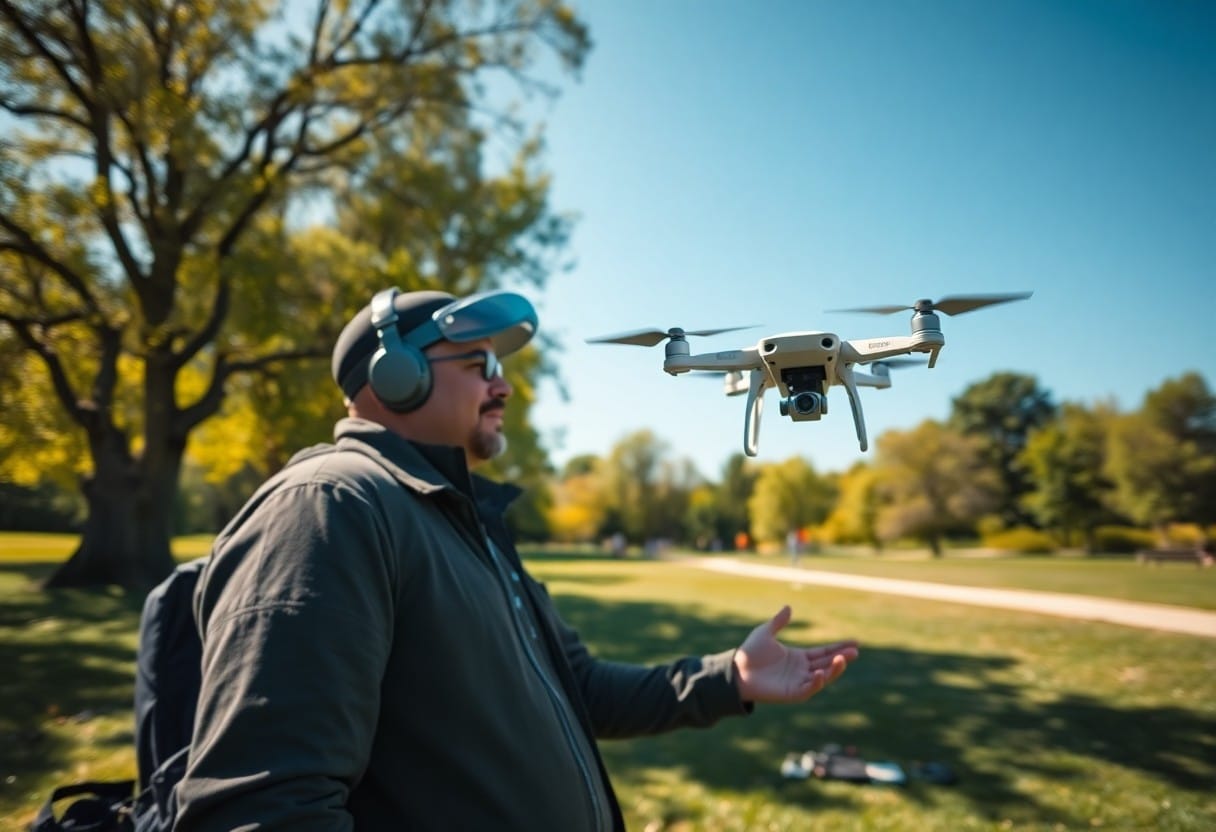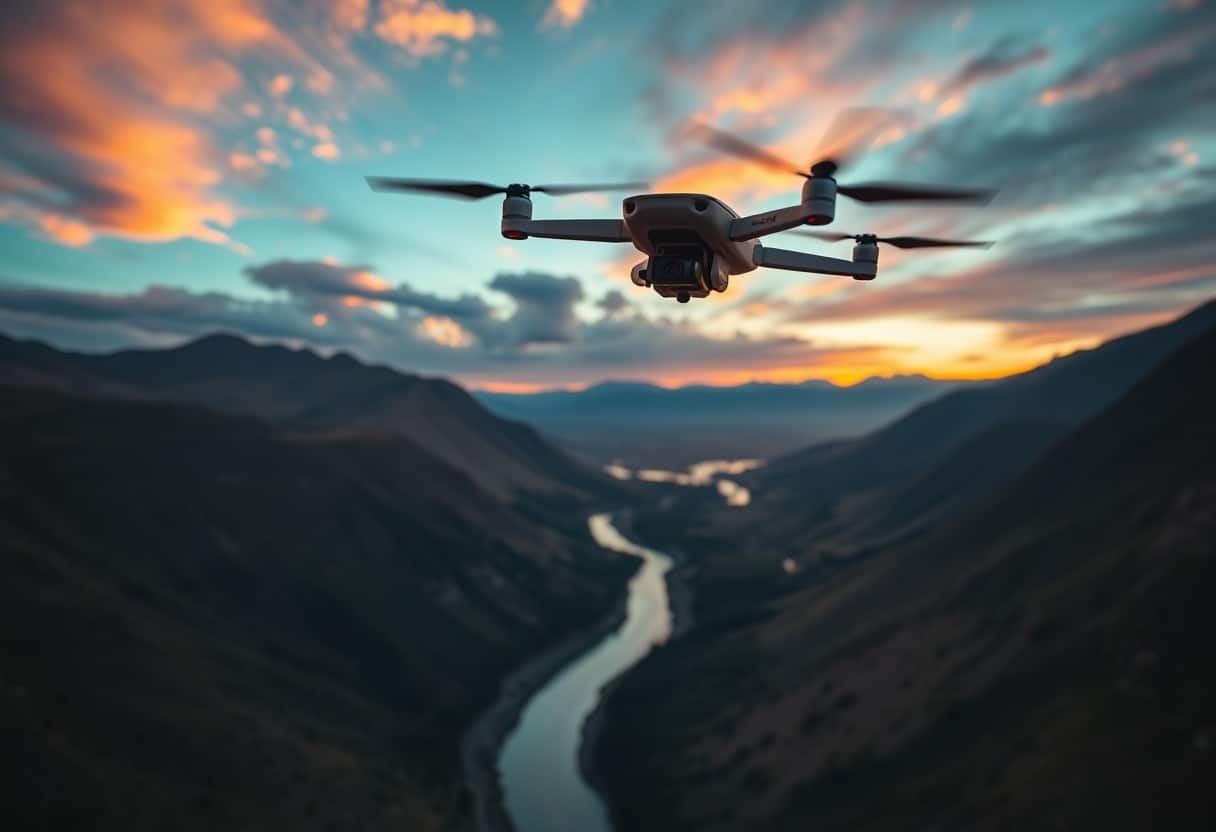Fly a Drone with Confidence - 6 Steps for Beginners
If you want to fly drones with confidence then follow theThese are the six key stepsis essential. Familiarize yourself with theBasic Drone OperationLearning how to handle various situations, as well as keeping up with flying laws and safety regulations, can help you minimize your risks and enjoy flying. In this article, we'll provide you with all the information you need to be able to fly withA confident and secure approachStart your drone flight.
Key Points:
- Get to know the drones:Before you begin, it is important to understand the basic construction and function of the drone.
- Choose the right drone:Choose the right drone model for your needs and budget.
- Learn the rules of flying:Familiarize yourself with local drone flying laws and regulations to maintain flight safety.
- Practical exercises:Practice in an open and clear location to improve flying skills and confidence.
- Use the simulator:Virtual flight using a drone simulator, which avoids the risk of damage during actual flight.
- Stay focused:Stay focused and avoid distractions from your surroundings while flying.
- Check the equipment regularly:Inspect the drone's batteries, propellers and other components before each flight to ensure the safety of the drone.

Understanding Drone Basics
Before you learn to fly a drone, you need to know a fewBasic knowledge of dronesThis includes the components of the drone, the principles of control, and how it operates. This includes the components of a drone, the principles of control and how it operates. A drone is not only a flying machine, but it also incorporates a variety of cutting-edge technologies, such as GPS, camera technology and automatic navigation systems, which make the control easier and smarter. Mastering these basics will make you more comfortable when operating a drone.
Drone Type
There are several types of drones on the market that can be used according to theYour needs and skill levelMake your selection. Here are some of the main types:
- Aerial Drone - Ideal for shooting high-quality video and photos.
- Racing Drones - Designed for speed and agility for racing.
- Fixed-wing drone - It can fly over long distances and is suitable for mapping and surveying.
- Multi-rotor drone - The most common type, suitable for beginners and recreational use.
- Autopilot Drone - It is capable of flying automatically without the need for maneuvering.
Assuming you wish to choose a model that is suitable for getting started, it is advisable to start with a multirotor drone.
Necessary drone terminology
In the course of flying a drone, you will be exposed to a number ofBasic TerminologyUnderstanding these terms is essential to improving your flying skills. Understanding these terms is essential to improving your flying skills.
Some common drone terms includeFPV (First Person View),RTH (Return to Home Trucking)respond in singingLIPO BatteriesThe FPV Allows you to view in real time through the drone's camera, enhancing the immersion of the flight; RTH The automatic return to the take-off point in case of signal loss is essential for your safety.LIPO BatteriesThese are the types of batteries used in most drones, and choosing and maintaining them is an important factor in flight time. By understanding these terms, you will be able to communicate more effectively with other enthusiasts.
Pre-flight Preparation
Before you start flying your drone, it's important to make adequate pre-flight preparations. Make sure you understand the laws and regulations in your area, the flying environment and your skill level. You can learn more in this article:The Ultimate Guide - 7 Steps to Amazing Aerial PhotographyThe
Check local regulations
Before flying, you must check your local drone regulations. Restrictions and requirements for flying a drone may vary from region to region. Ensure that you comply with the relevant laws so that you can avoid legal disputes and fines, as well as protect your safety and the safety of others.
Check your drone
Before flying, it's important to carefully inspect your drone. You need to check that the batteries are sufficient, that the propellers are intact, and that all connections are secure. Neglecting these steps could result in an accident or loss of control, which could affect the flying experience. When checking your drone, pay special attention toBattery Statusrespond in singingIntegrity of the propellerThese are key factors in flight safety. Regular maintenance and inspections of your equipment can help you identify problems in a timely manner, ensuring safe and confident flights.
Mastering Controllers
On a journey to fly a drone.Mastering ControllersThis is an important step. Understanding each button and its function can make a big difference in your flying experience. If you are new to flying, it is recommended that you check out thisComprehensive Steps for Effective Drone Control in Any Situationresources to help you get started quickly.
Learning Remote Control
The remote control acts as a bridge between you and the drone, transferring precis control to you. Each control stick and knob has its own unique function, and you'll need to take time to familiarize yourself with these controls. Whether you're adjusting your altitude or changing direction, a clear understanding of the remote control's operation will make your flying experience smoother.
Practice, practice, practice.
After mastering the basics of the remote control, practice is the key to improving your flying skills. Start with simple maneuvers, such as hovering or steering, and work your way up to more complex flight patterns. TheseExercise not only boosts your confidence, it also helps you avoid potential dangers!The
When practicing, it is recommended to choose an open space to minimize the risk of collision. At the beginning, you can set up some markers as flying targets so that you can clearly see your progress.As you continue to practice, you'll find yourself getting more and more comfortable with your flight maneuvers!It's also better equipped to handle unexpected situations, making your flight safer!

Choosing the right place to fly
Before you start flying, it is important to choose a suitable flying site. The ideal location should be far away from people and buildings to avoid accidents and disturbances. You can refer toPrecision Creation - 8 Steps to Mastering the Latest CAD ToolsIn addition, the Government has also provided a number of other services to the public, such as the provision of a hotline to the public for the purpose of obtaining more guidance and advice.
Ideal environment for beginners
As a beginner, choosing an open area, such as a park or farmland, will allow you to become more comfortable and familiar with flying. Avoiding crowded urban areas and areas with obstacles will reduce the risk of accidents and increase your flying confidence.
security consideration
When choosing where to fly, it's important to considersuretyProblems. Ensure that the flight area does not pose a threat to others and comply with local laws and regulations to avoid incurring legal liability.
When flying a drone, you must maintainHigh alert.And consider all possible risks. Ensure you have a good understanding of your surroundings, theAvoid flying especially in crowded places.It is also important to choose the time of day when the drone will be flying to prevent unnecessary injuries or damages. It is also important to choose the time of the day when the drone will be flying and to avoid flying atStrong winds or inclement weatherMid-flight to ensure safety.

Flying tips to increase confidence
As you learn to use the drone, master some basicFlying TechniquesThese tips will help you stay calm in different environments and increase your confidence in flying and avoid unnecessary accidents. These skills will help you stay calm in different environments, improve your flying confidence, and avoid unnecessary accidents. From proper takeoffs and landings to basic maneuvers, these are the key skills that novice pilots must master.
Taking off and landing
Dronestake offrespond in singinglandThis is the most important aspect that will directly affect the safety of the flight. Before taking off, make sure your surroundings are safe and avoid obstacles and crowds. When landing, you need to maintain a stable altitude and gradually lower the drone to ensure a smooth landing.
Basic Actions
Basic maneuvers are the most important skills you need to master during flight and includeFlip, rotate and moveThese actions allow you to control the flight path of the drone and perform tasks such as filming specific angles. These actions allow you to control the flight path of the drone and perform tasks such as photographing specific angles. Most drones have an autoflight mode, so you can try practicing in a safe environment to gain confidence.
When performing basic maneuvers, you should pay special attention to the flight'sstabilityrespond in singingreactiveSpeed. ExerciseLeft and right rotationrespond in singingForward and backward movementMaintaining the balance of your drone is extremely important when flying. Once you have mastered these basic maneuvers, you will be able to face all kinds of flying challenges with more confidence and improve your drone skills.
Solving Common Problems
When you're flying a drone, it's not uncommon to run into problems. First, you need to make sureBattery is fully chargedIf your drone loses its signal, remember to fly it immediately. If your drone loses its signal, remember to immediatelyActivate Return FunctionThis will prevent accidental damage. In addition, check the flight environment to avoidStrong winds or obstaclesWhen the airplane is destabilized, quick adjustments are made. When the vehicle is destabilized, quick adjustment of thecontainIf you are in an emergency, stay calm and ensure a safe landing. In an emergency, always check your drone's settings to improveFlight StabilityThe
Maneuvering a Drone with Confidence - Six Steps for Beginners
By following these six steps, you'll be able to control your drone with confidence. First, familiarize yourself with the drone operator's manual and understand its features, then practice flying in a spacious, safe area. Gradually improve your skills and start recording and taking photos to further explore the potential of your drone. Make sure you follow local flying regulations and keep learning to improve your flying skills. With more practice, you'll become more comfortable and enjoy flying.
Frequently Asked Questions
Q: How to choose the right drone for beginners?
A: When choosing a drone, consider flight performance, camera functions, ease of operation and budget. Beginners are advised to choose an entry-level drone that is easy to maneuver, and check out user reviews and professional evaluations to make sure it suits their needs.
Q: What do I need to prepare before flying a drone?
A: Before flying, make sure you check the drone's power level, propeller integrity, and familiarize yourself with the operator's manual. Also, choose an open, safe flying site and check local flight regulations and restrictions.
Q: What safety precautions should I take when flying a drone?
A: Avoid flying over crowds, near airports and other no-fly zones. At the same time, keep the drone in sight and pay attention to your surroundings at all times to avoid collision with other flying objects.
Q: How can I improve my drone flying skills?
A: Beginners can improve their flying skills by practicing more, and it is recommended to start with simple maneuvers such as forward, backward and turns. In addition, taking flying lessons, watching tutorial videos, and interacting with other enthusiasts are all good ways to improve.
Q: What apps should I use to help fly my drone?
A: Many manufacturers offer proprietary mobile apps that display flight data, navigation maps, and drone settings. Common apps also include support platforms for the drone community for flight advice and experience sharing.
Q: What do I need to pay attention to for the maintenance of the drone?
A: Drones require regular inspection and maintenance, including cleaning the airframe, checking the battery status and replacing worn propellers. In addition, the drone should be stored in a dry, dust-free place to extend its lifespan.
Q: What should I do if my drone malfunctions?
A: If the drone malfunctions, the first step is to turn off the power immediately to avoid further damage. Check the source of the problem, such as propeller, battery or controller, and follow the manual for troubleshooting. If the problem cannot be solved by yourself, it is recommended to seek professional repair service.




